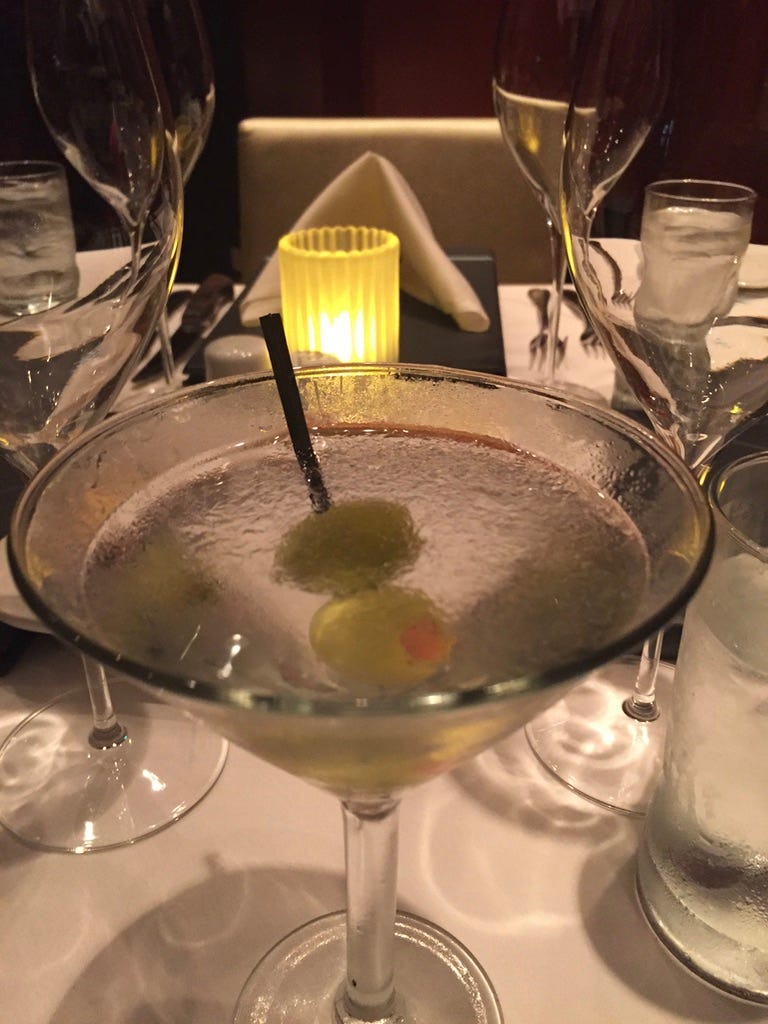Many years ago, my father was appointed a judge by the governor of Massachusetts, Frank Sergeant. I thought well of Governor Sergeant, whom I used to see skiing frequently at Cannon Mountain in northern New Hampshire. He was handsome, with his patrician looks and traditional skiwear. I was pleased that he had chosen my father, a bright and hardworking attorney.
After a long day on the bench dealing with aggressive lawyers and manipulative “bad guys,” my father liked to unwind with a Martini. Sometimes he and his court officers would go out, but over time, that became more complicated. Small town judges back then were local celebrities, and bistro owners and patrons alike were always trying to win favor by buying drinks and dinners. My father enjoyed the attention, but he recognized the potential conflict of interest, so he often went home to relax.
Early on, he taught me the fine art of making Martinis. I took that skill to college, where I worked as a bartender for private parties. Over time, I realized that for many, Martinis were as much a symbol as an alcoholic drink. They signaled that the time for worry and organized thought was over. Martinis were a prelude to a fine meal or a satisfying end in themselves. They could be discussed endlessly with interest and enthusiasm. They never really lost their popularity on the East Coast, where the remnants of Calvinism and Puritanism continued to battle fun and joy. They proved to be a powerful weapon in that “holy” war.
Before continuing, I must clarify what a Martini is and is not. Martinis served over ice are good, but they aren't true Martinis. They're gin and water with a splash of Vermouth. Drinks with a bit of fruit juice mixed with gin also aren’t Martinis, though they can be pretty and probably taste good. I don’t consider a vodka martini a real Martini, but I might be in the minority on that. Martinis garnished with onions, lemon twists, and olives all qualify as true Martinis.
Like a Ferrari, a Martini can be great fun, but if mishandled, it can be dangerous. One is good; two maybe, depending on the size of the glass, but three doesn’t work. In my bartending days, I never saw anyone who could drink three Martinis without a problem.
Restaurants often make poor Martinis. You might wonder why, since most establishments have professional bartenders. The key lies in the chilling process. To craft an outstanding Martini, start by placing your Martini glasses in the freezer. Then, add ice cubes to a glass pitcher and freeze it for 5 minutes. Avoid using ice chips because they add excess water when mixing, diluting the flavor. Choose a high-quality gin, such as Bombay Sapphire or Tanqueray Ten, and pour it over the ice, which has clumped together. Add a small amount of extra dry Vermouth. Don’t measure precisely—this keeps the process fun and artistic. Stir the mixture well with a long spoon, then return the pitcher to the freezer for a few minutes. Remove the chilled glasses from the freezer, add three Spanish olives on a toothpick, pour the drink, and serve. If made correctly, the Martini should be ice-cold, with tiny ice crystals floating on the surface, resembling a Great Lake in January.
If the process has been successful, you’ll hear sighs, see smiles, and get comments like, “That’s what I call a drink.”
Coming up: Stories from the road and The Twins. If you’ren’t receiving Stories from the Road starting tomorrow, and you would like to, please contact me.





A "Martini" garnished with onions is a Gibson, not a Martini. A martini made with vodka has become common usage. I might add, that when I do drink a gin martini, I prefer Plymouth gin. I find the others overly perfumed. So, there!!!
Now, that's a drink!